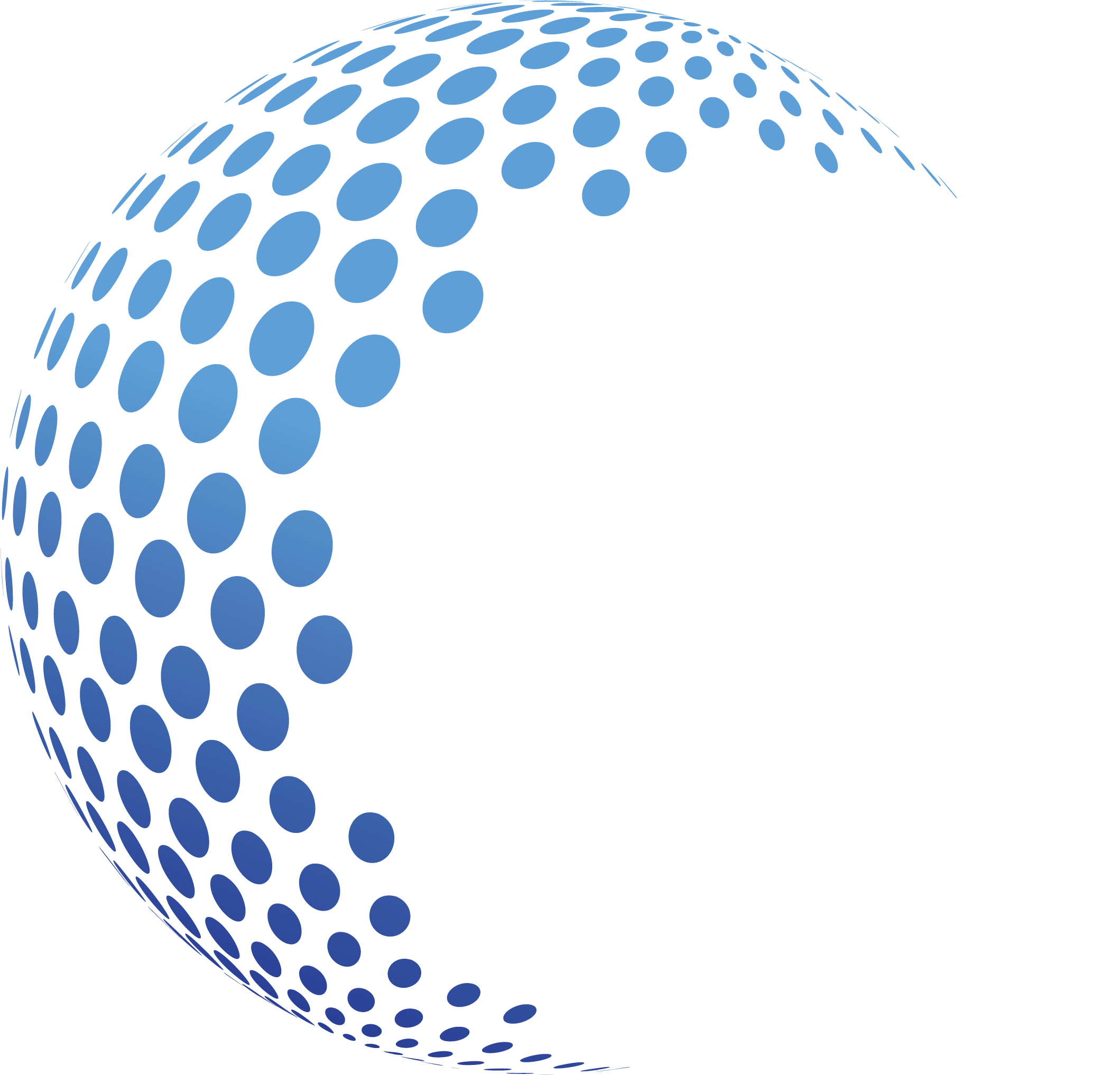ABOUT
The ability to operate a satellite in outer space requires access to radiofrequencies and orbital positions, both scarce resources. As the number of spacefaring states, commercial operators, and satellite applications grows, demand for these resources increases. Efficient and equitable managing of these resources to ensure long-term availability requires international cooperation and coordination.

THE RADIOFREQUENCY (RF) SPECTRUM
Part of the electromagnetic spectrum that can pass through Earth’s atmosphere, the RF spectrum is used for communication between satellites and ground stations. That is, the spectrum is used not only by space-based users, but terrestrial users. It is divided into frequency bands. Frequency is generally measured in hertz, defined as cycles per second. Radio signals can also be characterized by their wavelength, which is the inverse of frequency. Higher frequencies (shorter wavelengths) can transmit more information than lower frequencies (longer wavelengths), but are more susceptible to degradation when travelling through the atmosphere.

Radiofrequency Bands
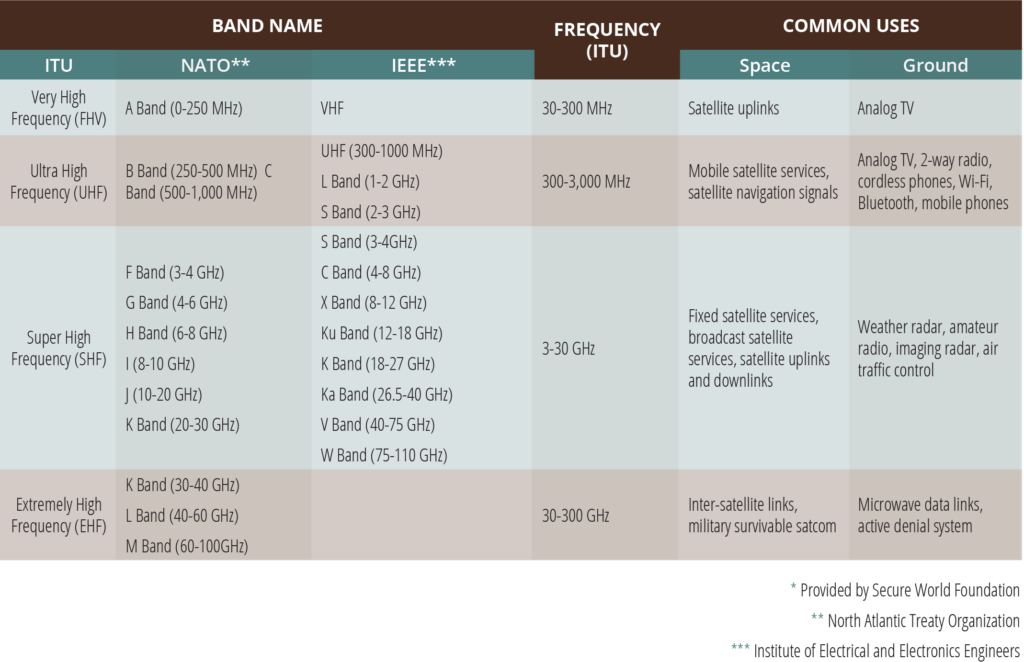
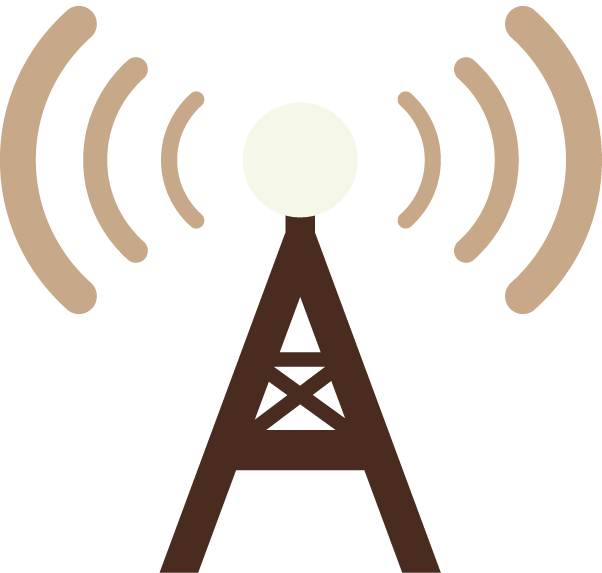
The use of a portion of the spectrum in one location on Earth may interfere with the ability to use the same spectrum in another area. Therefore, the spectrum must be managed globally. Satellite services also compete with terrestrial users such as mobile broadband service providers for access to the RF spectrum.
ORBITAL POSITIONS
A limited number of satellites can occupy a specific orbital path or position. Some are more restricted than others. For example, communications satellites, which have traditionally been located in geostationary orbit (GEO), must generate high-power transmissions to deliver strong signals to Earth. To avoid radiofrequency interference, satellites in GEO are required to maintain a minimum degree of orbital separation, which will vary depending on the band they are using to transmit and receive signals, the service they provide, and the technical capabilities of ground stations. Thus, only a limited number of satellites can occupy a specific orbital path, increasing competition for these resources. Crowding in other orbits is also becoming a concern. A growing number of global navigation satellite systems (GNSS) are locating in medium Earth orbit (MEO), while the use of low Earth orbit (LEO) for non-traditional communications services such as satellite broadband and the Internet of Things (IoT) is rapidly accelerating use of this orbit.
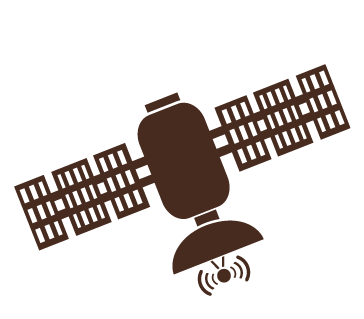
Satellite Orbits
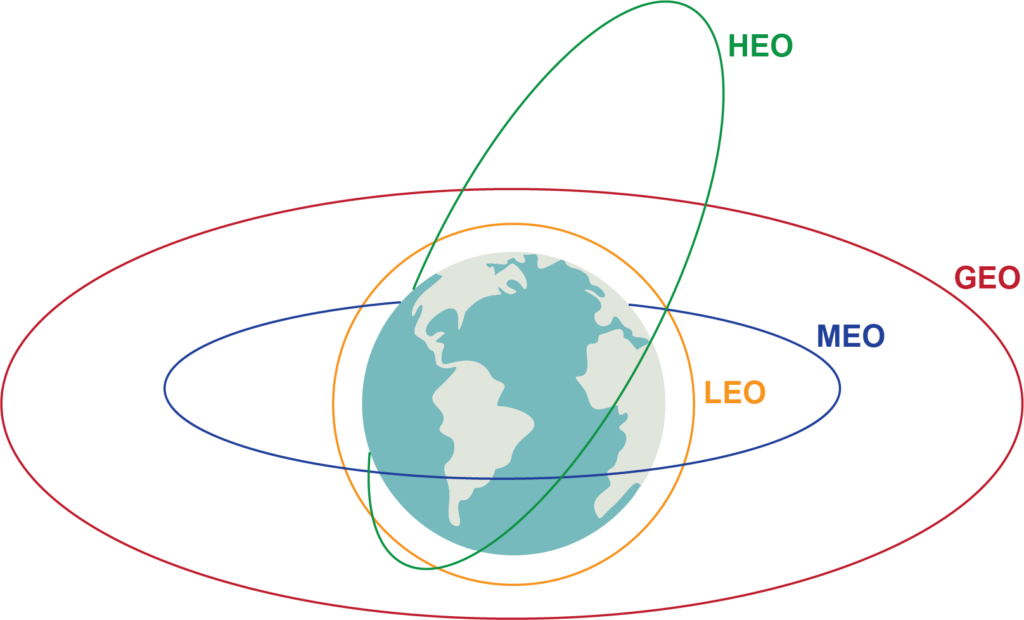
GOVERNANCE MECHANISMS
The current International Telecommunication Union (ITU) Constitution, originally adopted in 1992, governs international management of radiofrequency spectrum and orbital positions.

The ITU Constitution states that radiofrequencies and associated orbits “must be used rationally, efficiently and economically…so that countries or groups of countries may have equitable access” to both. In practice, orbital use has been secured on a “first come, first served” basis. However, Article 44 of the ITU Constitution recognizes “the special needs of developing countries and the geographical situation of particular countries,” which can affect allocation decisions. As well, orbital positions must be brought into operational use no later than seven years after submission to the ITU of the Advanced Publication of Information, a general description of the network or system. Extensions may be granted in some circumstances based on force majeure or unforeseeable circumstances; Egypt provided a recent example.
Governance is designed to both manage the efficient use of limited resources and prevent RF interference. Article 45 of the ITU Constitution stipulates that “all stations…must be established and operated in such a manner as not to cause harmful interference to the radio services or communications of other members.” With the exception of military users, all satellite operators have the same responsibility for noninterference.
Under the auspice of the ITU World Radiocommunication Conferences (WRC), which happen every 3-4 years, can revise the Radio Regulations and associated RF assignments to address global radiocommunication issues. For example, at the 2015 WRC, the mobile broadband industry gained access to C-band, previously reserved for satellite applications. No other spectrums provide the reliability or required capacity.

CHALLENGES
HARMFUL INTERFERENCE: Military communications are exempt from the ITU Constitution under Article 48; countries retain control of their military radio installations. Extensive use of this provision adds to the challenge of coordinating radiofrequencies. WRC-15 sought to limit the application of this provision by narrowing it specifically to “military use” and requiring a particular invocation of Article 48 to be exempted from the Master International Frequency Register.
The ITU is unable to verify claims of interference and has a limited ability to respond to complaints. A number of initiatives, including cooperation agreements with satellite-monitoring facilities to detect and help resolve cases of harmful interference have had limited success and RF interference remains a rampant concern.


NEXT-GENERATION SERVICES: Demand for RF spectrum continues to rise with the development of new services, including 5G or next-generation mobile broadband. Several decisions at WRC-2019 aim to facilitate expansion of new services and protect existing uses:
• Additional bands were allotted for International Mobile Telecommunications that facilitate development of 5G mobile networks, while Earth-exploration satellite service, meteorological and other passive services in adjacent bands will be protected.
• Ka-band spectrum will be expanded to allow for Earth Stations in Motion, such as aviation and maritime broadband connectivity.
• C-band downlinks in Africa and Asia using the 3.6 – 4.2 GHz range were reserved for satellite services.
• A regulatory framework was set up to allow non-geostationary satellites to operate in Q/V bands.
• A new allocation of 1 GHz of spectrum was made for the fixed-satellite service (FSS).
SATELLITE CONSTELLATIONS: Actualizing plans for large constellations of satellites in LEO—mainly for commercial communications services such as the SpaceX Starlink broadband satellites—is raising additional concerns. There is risk that such constellations will interfere with traditional communications satellites operating in GEO. Because communications satellites in both LEO and GEO use the same frequency, the process of coordinating radiofrequencies is more complex. Concerns have also been raised about interference with L-band, which is used by critical services including global weather satellites, GPS satellites, mobile operators, and aircraft surveillance systems.
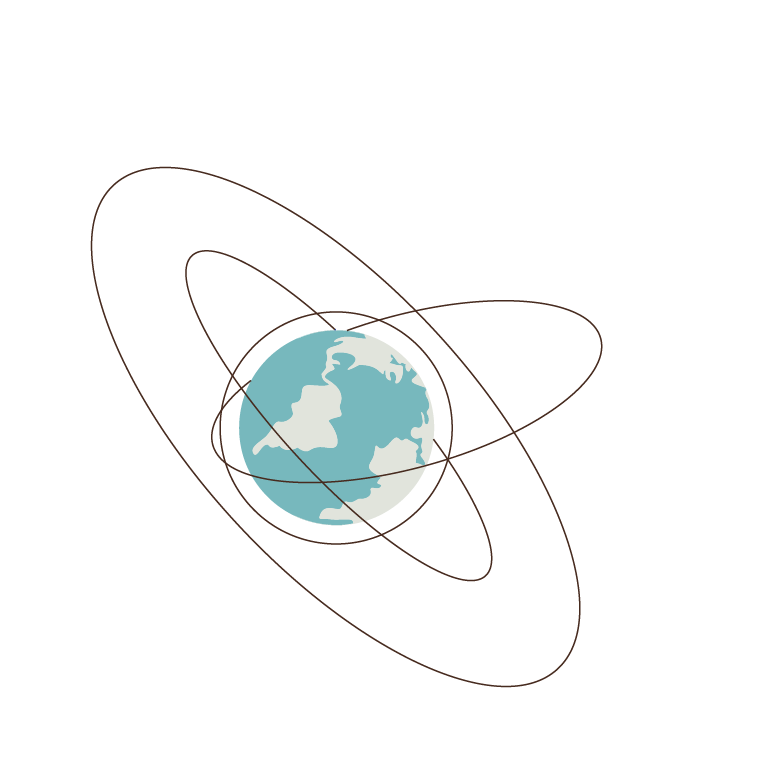

Plans for large constellations are straining existing regulations and practices, including frequency assignments, and raising questions about what it means for a constellation to be “brought into use,” which is the point when frequencies are protected and entered into the Master International Frequency Register. To avoid the hoarding of spectrum and orbital positions for proposed satellite constellations, a decision at WRC-2019 requires operators to meet new deployment milestones. Operators must not only deploy a satellite within seven years after the request for spectrum, but must launch 10% of their satellites within the next two years, 50% within the next five years, and 100% within the next seven years. If these obligations are not met, their spectrum rights are lost.
Crowding, overuse, and contamination of low Earth orbit is another concern. The prospect that large constellations in LEO will in practice exercise exclusive use of specific orbits also raises questions about the legal principle of non-appropriation of space.
ILLEGAL LAUNCH: The first—and to date only—unauthorized commercial satellite launch took place in 2018. Swarm Technologies launched four satellites on an Indian Polar Satellite Launch Vehicle without authorization from the Federal Communications Commission (FCC). In addition to fining the company, the FCC issued an enforcement advisory stating that ITU Radio Regulations are binding on states and require that “no transmitting station may be established or operated by a private person or by any enterprise without a licence.” The advisory emphasized the need to monitor compliance and suggested further sanctions. The episode raises questions about possible regulatory gaps that could deepen as both the satellite service and launch industry grow and become globally diverse.
RESOURCES
BR-SSD e-Learning Center, Harmful Interference to Space Services, ITU, 2018, https://www.itu.int/en/ITU-R/
space/elearning/presentations/UIT_SSD_028.pdf.
European Space Agency. “Satellite Frequency Bands,” 21 November 2013, www.esa.int/Our_Activities/Telecommunications_Integrated_Applications/Satellite_frequency_bands.
Federal Communications Commission. “Radio Spectrum Allocation,” 2020, https://www.fcc.gov/engineeringtechnology/policy-and-rules-division/general/radio-spectrum-allocation.
—–. Enforcement Advisory No. 2018-01, 12 April 2018, https://transition.fcc.gov/Daily_Releases/Daily_Business/2018/db0412/DA-18-368A1.pdf.
—–. Updating Rules for Non-Geostationary-Satellite Orbit Fixed-Satellite Service Constellations, Fact sheet, 7 September 2017, https://transition.fcc.gov/Daily_Releases/Daily_Business/2017/db0907/DOC-346584A1.pdf.
International Telecommunication Union. “World Telecommunication Conferences (WRC),” 2020, https://www.itu.int/en/ITU-R/conferences/wrc/Pages/default.aspx.
—–. Advance Publication Information: World Radiocommunication Seminar 2014, https://www.itu.int/en/ITU-R/space/WRS14space/API.pdf.
—–. Constitution and Convention of the International Telecommunication Union: Final Acts of the Plenipotentiary Conference, Marrakesh, 2002, online: http://www.itu.int/en/history/Pages/ConstitutionAndConvention.aspx.
Jakhu, Ram & Karan Singh. “Remote Sensing and Earth Observation Satellites: Space Cooperation and Space Security.” In Ajey Lele & Gunjan Singh, eds., Space Security and Global Cooperation (Academic Foundation,
2008).
Matas, Attila. Conflicts Related to Radio Frequency Interference Abuse of ITU Regulatory Procedures. 4th Manfred Lachs International Conference on “Conflicts in Space and the Rule of Law,” 27-28 May 2016, Montreal, Canada, https://www.mcgill.ca/iasl/files/iasl/1.a._matas.pdf.
Scheraga, Joel D. “Establishing Property Rights in Outer Space,” 6 Cato Journal, 1987, https://object.cato.org/ sites/cato.org/files/serials/files/cato-journal/1987/1/cj6n3-10.pdf.
Secure World Foundation, Radio Frequency Spectrum, Interference, and Satellites Fact Sheet, 25 June 2013, https://swfound.org/media/108538/swf_rfi_fact_sheet_2013.pdf.
Takaya-Umehara, Yuri, Quentin Verspieren & Goutham Karthikeyan, “The Principle of Non-Appropriation and the Exclusive Use of LEO by Large Satellite Constellations,” October 2018, https://www.researchgate.net/publication/328094878_The_Principle_of_Non-Appropriation_and_the_Exclusive_Use_of_LEO_by_Large_Satellite_Constellations.
United Nations Office for Outer Space Affairs/International Telecommunication Union, Guidance on Space Object Registration and Frequency Management for Small and Very Small Satellites, 2015, http://www.unoosa.org/documents/pdf/psa/bsti/2015_Handout-on-Small-SatellitesE.pdf.

